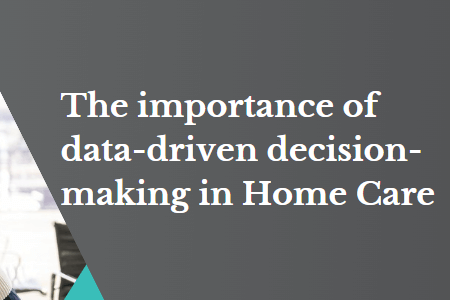How 4 providers are creating profitability in aged care
July 4, 2024 | Data

By Andrew Farmer, CEO and Partner
In our recent June webinar on Strategies for profitability in aged care, four industry leaders shared their experiences and strategies in managing the financial and operational challenges of the past 12 to 18 months. This blog summarises their key points and insights.
Panel insights: Navigating challenges and embracing opportunities
Panelists:
- Tim Hicks, Executive General Manager Policy and Advocacy, Bolton Clarke
- Lee Martin, CEO and Director of Care, Lutheran Homes Barossa
- Athena Ermides, CEO, Good Shepherd Lodge
- Chris Marmarelis, CEO, Whiddon
Chris Marmarelis: Optimising AN-ACC and Financial interplay
Chris Marmarelis emphasised the critical role of commerciality in enabling quality care and workforce support. Over the past year, Whiddon has focused on optimising AN-ACC strategies and ensuring no “lazy dollars” are left unutilised. This involved leveraging third-party partnerships and internal resources to manage and review financial and operational data regularly. A key part of their journey has been the close collaboration between operations and finance teams, ensuring a dedicated partnership and approach to achieving outcomes.
Chris also highlighted the importance of additional services in enhancing profitability. Despite improvements in their EBITDA outcomes, the organisation is still striving to achieve a net profit position that covers capital costs and depreciation. This underscores the need for ongoing reform in the sector.
Tim Hicks: Building sustainability through efficiency and value
Tim Hicks from Bolton Clarke shared his perspective on building sustainability and stable margins through operational efficiency and claiming value. He stressed the importance of assessing resident needs accurately and ensuring that accommodation prices reflect the true value of services provided. This approach helps in maintaining sustainable margins and improving financial health.
Lee also touched on the challenge of creating new value in the sector. This requires time, innovation, investment, and navigating policy uncertainties. With the ever-changing regulatory landscape, it’s difficult for providers to plan long-term budgets and strategies. However, focusing on efficiency and value can help mitigate some of these challenges.
Moving forward: Strategies for the future
Shifting the focus towards the future, the panel discussed how their organisations are considering both immediate and long-term challenges and opportunities for sustainability.
Athena Ermides: Good Shepherd is a regional provider with two sites and faced dire circumstances about a year ago. They initiated extensive forecasting and developed a robust strategy that brought together finance, clinical, and admission teams, collaborating daily. Despite the remote location, Athena highlighted that they have no occupancy issues but face challenges in attracting and retaining staff, often paying a premium for them. Good Shepherd is focusing on learning and development to ensure new staff are adequately trained. Additionally, they are looking into maximising revenue from various program areas, planning to bring on a business development manager to spearhead these efforts.
Tim Hicks: Tim shared that they’re in a holding pattern, awaiting more policy clarity from the upcoming Aged Care Act draft and the government’s response to the task force recommendations. This uncertainty affects our ability to plan around consumer contributions and additional services. The delay, however, provides an opportunity to develop new service offerings and refine existing ones, positioning Bolton Clarke for future regulatory environments. The sector’s challenge is overcoming the expectation of all-inclusive services, requiring a shift in consumer perceptions and more robust product development processes.
Lee Martin: Lee shared that his organisation has embraced innovation, deploying robots for back-of-house tasks to enhance efficiency and safety. They maintain a high occupancy rate and meet concessional ratio requirements without issue. However, Lee believes the key to thriving in today’s aged care sector is a higher-risk appetite, encouraging out-of-the-box solutions to improve service delivery.
Chris Marmarelis: Chris shared his view that organisations’ should have already embedded processes for RAD pricing reviews, additional services, and managing concessional ratios. Post-COVID, these should be standard practice. Addressing labour costs, especially agency staff, is crucial. They have implemented control mechanisms and enhanced recruitment and retention strategies. Additionally, we tackled regional challenges by purchasing houses for staff, improving cost efficiency. The current funding model necessitates inefficient spending for quality care, highlighting the need for advocacy and policy changes.
Key Takeaways:
- Strategic collaboration and forecasting: Providers are emphasising the importance of integrating various departments to ensure cohesive and strategic operations, especially in financial and admission planning.
- Staffing challenges and solutions: Attracting and retaining staff in regional areas remains a significant issue, often requiring higher wages and innovative solutions like offshore recruitment and enhanced training programs.
- Embracing innovation: Implementing technology, such as robots for repetitive tasks, can improve efficiency and reduce labor costs, demonstrating the need for a high-risk appetite and willingness to explore new solutions.
- Policy and funding uncertainty: The industry’s reliance on clear policy direction from the government impacts strategic planning. Preparing for potential changes in consumer contributions and service offerings is crucial.
- Managing Additional Services: Developing and marketing additional services requires careful planning and overcoming consumer expectations of all-inclusive care, necessitating a shift in approach and mindset within the industry.
- Advocacy for Regional support: The disparity in funding and classification for regional areas needs addressing. Effective advocacy and engagement with policymakers are essential to secure necessary support and resources.
To watch the full webinar recording visit the events page.
For support on developing strategies for profitability, please get in touch.


